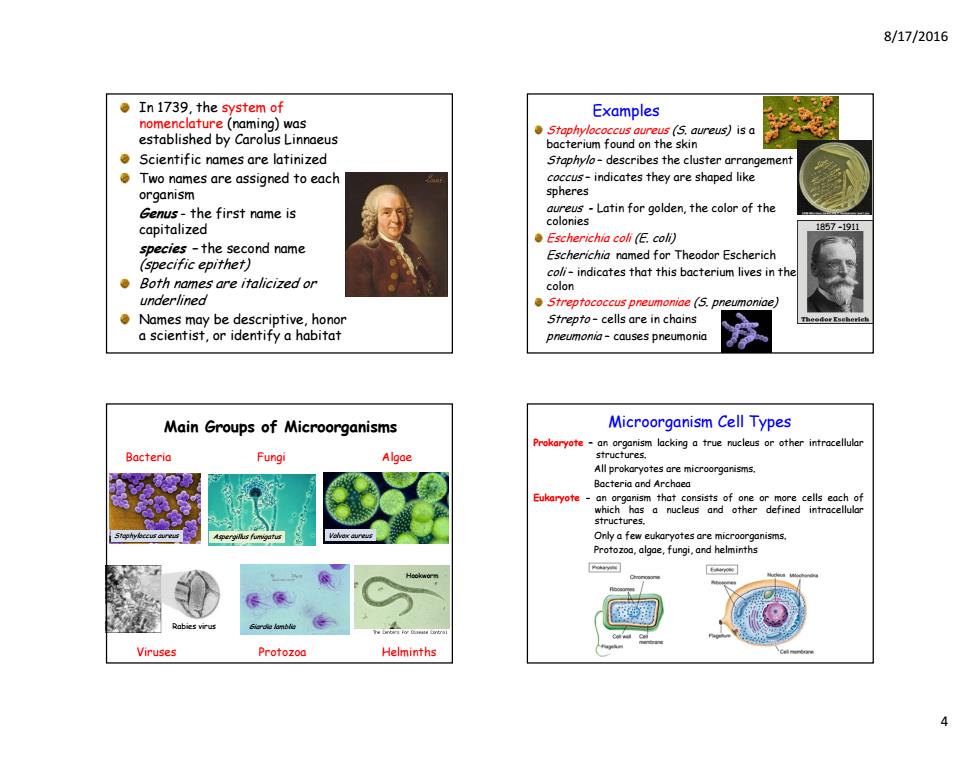正在加载图片...

8/17/2016 。In1739,the system of Examples nomenclature(naming)was established by Carolus Linnaeus Staphylococcus aureus (S.aureus)isa bacterium found on the skin Scientific names are latinized Staphylo-describes the cluster arrangement Two names are assigned to each coccus-indicates they are shaped like organism spheres Genus-the first name is Lin for golden,the colr of the capitalized ●Escherichia coli(E.colj species-the second name Escherichia named for Theodor Escherich (specific epithet) coli-indicates that this bacterium lives in the Both names are italicized or colon underlined Streptococcus pneumoniae (5.pneumoniae) Names may be descriptive,honor Strepto-cells are in chains a scientist,or identify a habitat pneumonia-causes pneumonia Main Groups of Microorganisms Microorganism Cell Types Bacteria Fungi Algae All prokaryotes are microorganisms. Bacteria and Archaea Eukaryote-an organism that consists of one or more cells each of which has a nucleus and other defined intracellular structures. Only a few eukaryotes are microorganisms. Protozoa,algae,fungi,and helminths Rabes vrus Girdie lambl恤 Viruses Protozoa Helminths 48/17/2016 4 In 1739, the system of nomenclature (naming) was established by Carolus Linnaeus Scientific names are latinized Two names are assigned to each organism Genus - the first name is capitalized species – the second name (specific epithet) Both names are italicized or underlined Names may be descriptive, honor a scientist, or identify a habitat Staphylococcus aureus (S. aureus) is a bacterium found on the skin Staphylo – describes the cluster arrangement coccus – indicates they are shaped like spheres aureus - Latin for golden, the color of the colonies Escherichia coli (E. coli) Escherichia named for Theodor Escherich coli – indicates that this bacterium lives in the colon Streptococcus pneumoniae (S. pneumoniae) Strepto – cells are in chains pneumonia – causes pneumonia Examples 1857 –1911 Main Groups of Microorganisms Viruses Protozoa Helminths Bacteria Fungi Algae Hookworm Rabies virus Giardia lamblia Staphyloccus aureus Aspergillus fumigatus Volvox aureus Prokaryote – an organism lacking a true nucleus or other intracellular structures. All prokaryotes are microorganisms. Bacteria and Archaea Eukaryote - an organism that consists of one or more cells each of which has a nucleus and other defined intracellular structures. Only a few eukaryotes are microorganisms. Protozoa, algae, fungi, and helminths Microorganism Cell Types